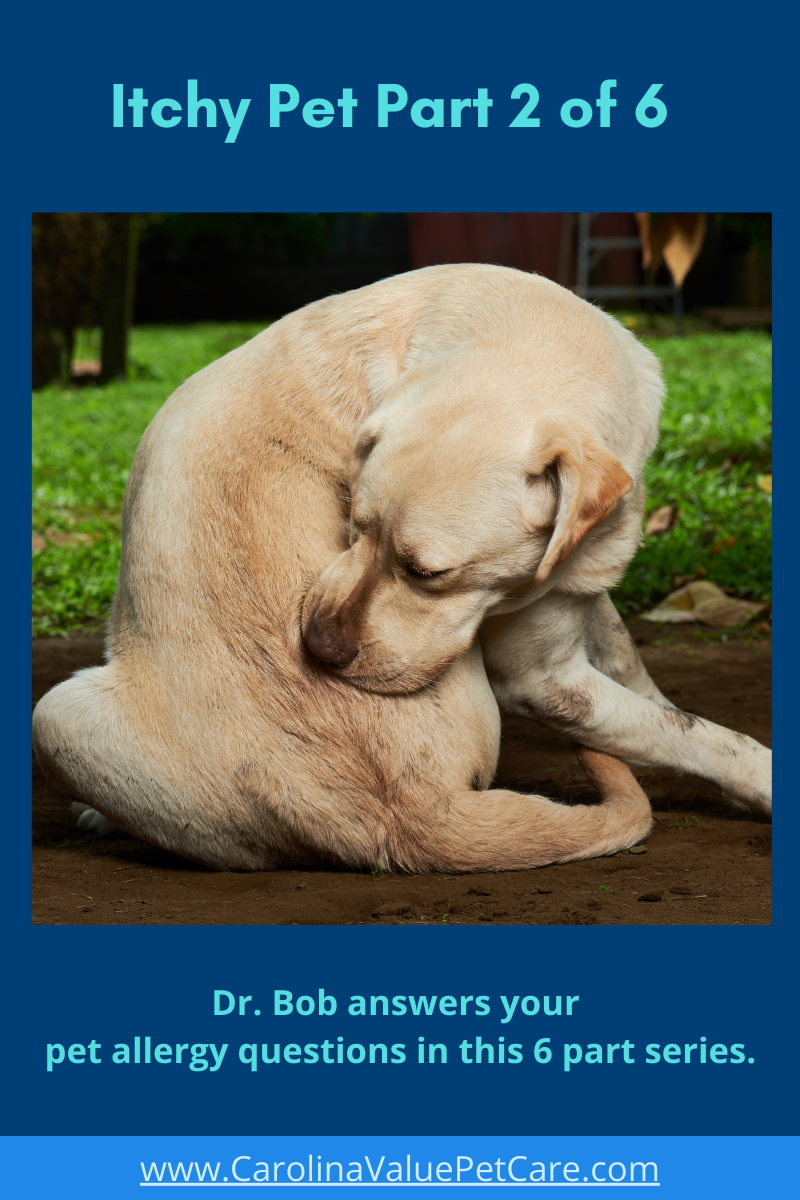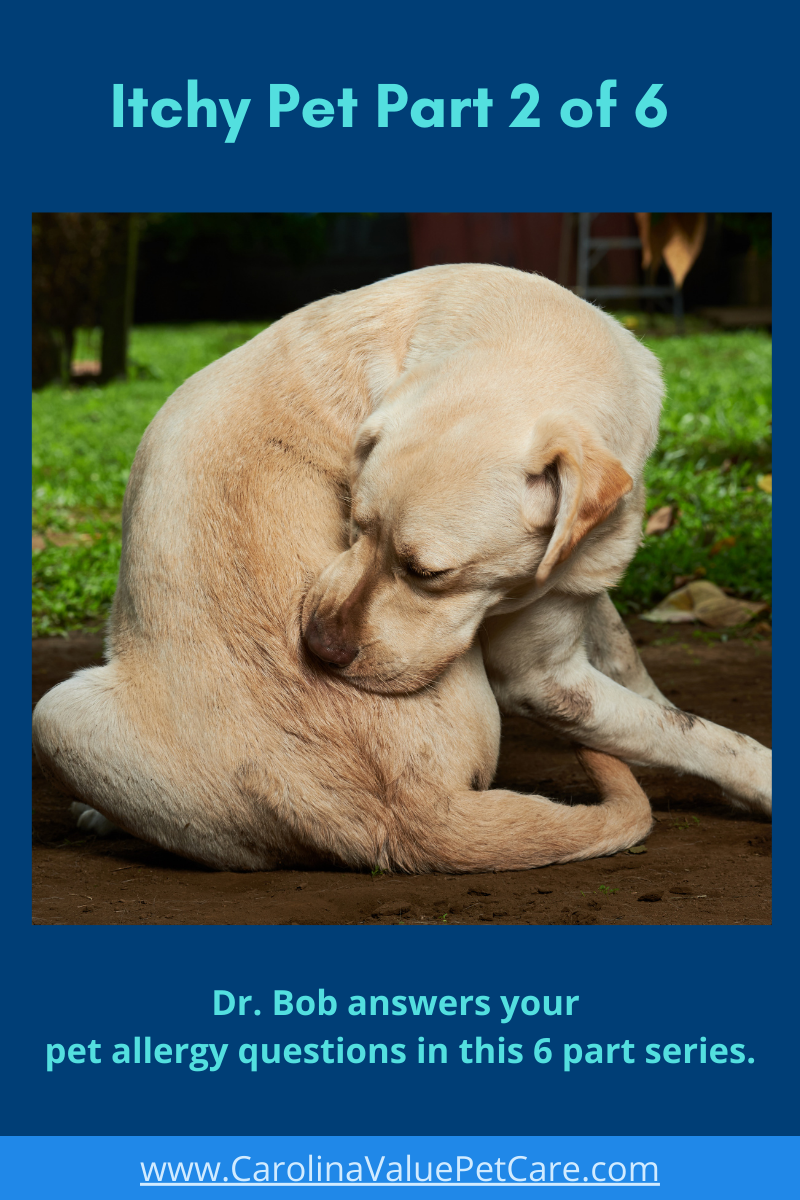
Virtually every pet we see with skin allergies (and ear infections) results from environmental or inhalant allergies, seasonal allergies, food allergies, flea allergies as well as bacterial and yeast infections of the skin.
Environmental allergies involve house dust, dust mites, molds and mildews. Just as with people who suffer from allergies to house dust and dust mites, pets can be affected year-round by dust as well.
Seasonal allergies typically involve plants, usually In a seasonal cycle. Spring pollens from flowers and trees trigger a wave of itchy pets from March thru May. Then come Summer allergies from grass pollens from May through August. Finally, Autumn brings pollens from weeds from September through December. The same is true for people as well.
It’s worth mentioning that dusts and pollens enter the body in 2 different ways: by breathing / inhaling as well as through the skin. And since dogs go barefoot when outdoors, it can be extremely helpful to wipe their feet, face and bodies with a damp wash cloth each time they come back inside the house.
Food Allergies involve an ingredient that triggers an allergic reaction. The 2 most common cause of food allergies are Chicken and Beef, but they are certainly not the only food ingredient repsonbile for food alelrgies.
Flea allergies are the easiest of all allergies to control since we have several excellent medications to eliminate fleas. And pleeeeeeeze do not waste your money on Frontline or generic flea medications. You’ve worked hard for your money. Put it to good use to help your pets.
Bacterial infections and yeast infections of the skin and ears usually result from seasonal or environmental allergies, but they need to be treated as well since they can be a significant source of itching on their own.
Next, we’ll look at different treatments available to manage allergies.
– Dr Bob Parrish @ Carolina Value Pet Care

